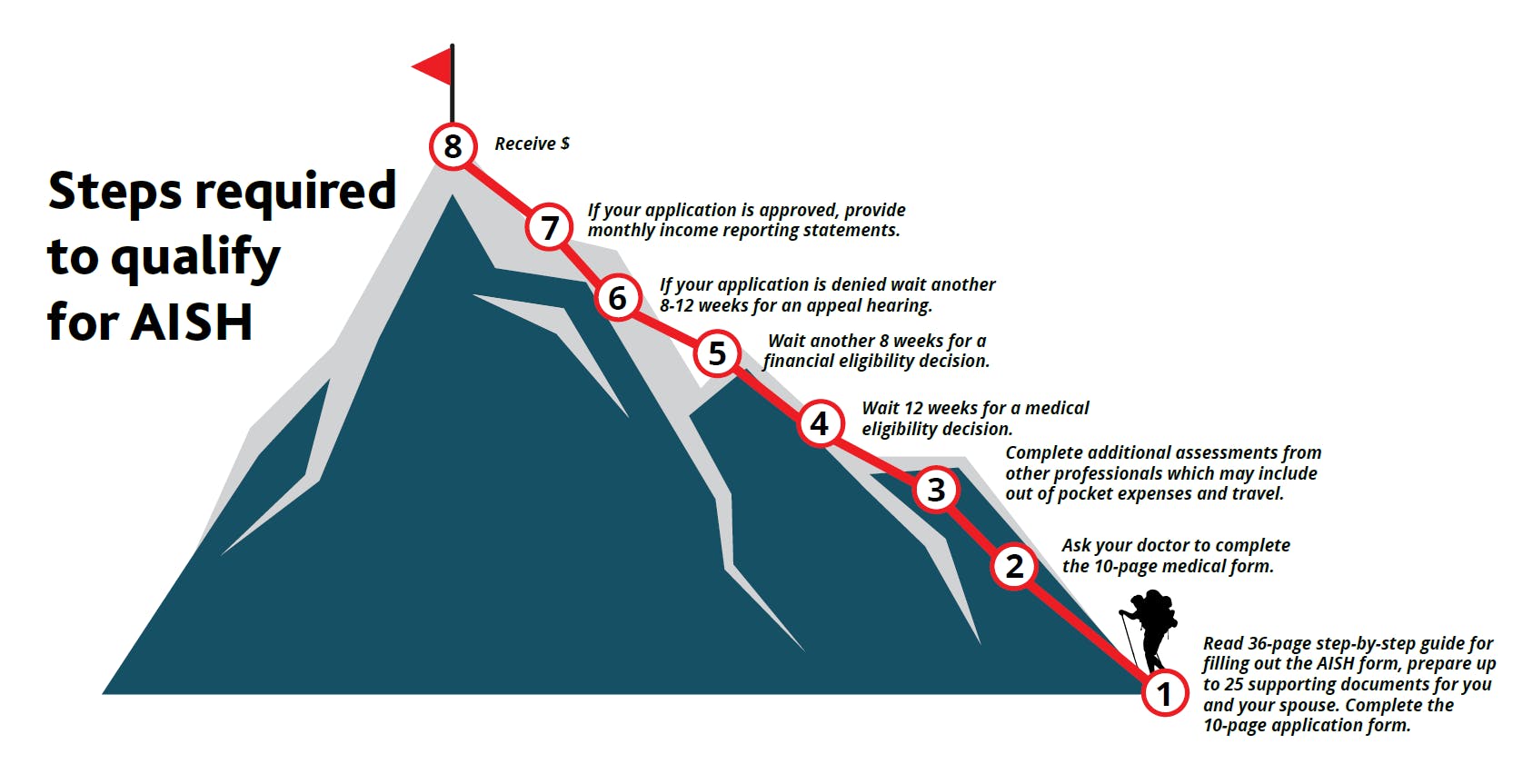Alberta's Assured Income for the Severely Handicapped (AISH) program is a lifeline for many individuals with permanent disabilities. However, the program's eligibility requirements, limited benefits, restrictive policies, and unfair appeal process hinder its effectiveness and fail to provide meaningful support to those who need it most.
We recently undertook a deep dive into AISH with agencies and individuals that serve people with disabilities and people with lived experience. We uncovered opportunities in a new policy brief, Improving the Effectiveness of AISH and below we have outlined some key things to know about the AISH program.
AISH benefits do not meet the poverty line
The maximum AISH benefit is more than $500 below Calgary’s poverty line and the way that inflation is calculated doesn’t reflect the reality for people living on low incomes. Now don’t get me wrong, I was very pleased that the government made the move to start adjusting AISH benefits to reflect the increased cost of living earlier this year. However, the current method of indexing AISH benefits using the all-items Consumer Price Index is inadequate for individuals with very low incomes. It should be calculated in a way that more closely ties to food and housing inflation.
Many people fall through the cracks
Applying for AISH is a messy business. Procedures and language are confusing and access to case managers is limited. Out-of-pocket expenses can be as high as $6,000 and certain eligibility requirements present unnecessary obstacles for individuals with severe, temporary disabilities or moderate but permanent disabilities.

People who qualify for federal disability programs must apply again for AISH
Even if someone qualifies for federal government programs like the Canada Pension Plan Disability and the Disability Tax Credit, they still need to apply and complete medical forms and documentation for AISH. This process involves a lot of unnecessary red tape.
People with disabilities not on AISH must continuously justify their income support benefits
Many people with disabilities don't qualify for AISH because they can't prove the permanency of their disability, and must rely on provincial income support. Income support recipients are closely monitored and benefits can be discontinued if a person refuses paid work, training, or rehabilitation. This policy excludes people who genuinely need support, but don't have the capacity for justifying their disability.
AISH appeals are difficult or impossible for those with intellectual or cognitive difficulties
According to advocates and people with lived experience, it is nearly impossible for those with cognitive and intellectual disabilities to appeal an AISH decision without an advocate, and referrals to community organizations are few and far between. The AISH program has specialists trained to present information at appeals and may consult lawyers before the appeal, while the appellant has no such guarantee.
Improving the AISH program requires a collaborative approach to streamline processes, align definitions, and adopt alternative measures for benefit indexing. We can ensure a more inclusive and supportive society by addressing the eligibility criteria, enhancing transparency, and eliminating counterproductive work conditions.
It's time to address these issues head-on and improve the AISH program to better serve Albertans with disabilities.





